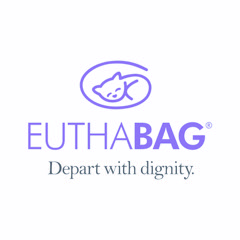I have always approached euthanasia decision-making as finding the path of least regret. Choosing euthanasia is hard. What REALLY prepares someone to elect euthanasia for a beloved friend? The physical and emotional condition of the pet, the burden of care for owners and their own emotional health all tend to play a role in when euthanasia is sought. The path of least regret will be obvious for many, but just as many need help in understanding the complexities of the dying pet. It’s a lot for anyone to take on.
As the saying goes, ‘knowledge is power’ [quote attributed to Sir Francis Bacon, the same man who used the term Euthanasia in his writings in the 17th century]. With knowledge, one’s ability to succeed in one’s objectives will increase. Knowledge about a pet’s decline in health is powerful. Objective one – reduce suffering. Objective two – maintain good quality-of-life (QoL). If knowledge is to guide euthanasia decisions, veterinarians have an opportunity and obligation to arm clients with as much information about the pet’s condition as possible. Knowledge can also reduce fear-based decisions which can lead to premature euthanasia. Thankfully vet med has developed tools to help pet owners and caregivers comprehend the physical, emotional, and behavioral changes in animals coping with disease.
So what are these tools and how do we gain knowledge to help us with euthanasia decisions? In an oversimplification, diagnostic testing measures the body’s physical health while QoL scales/assessments better determine what may be important in the pet’s life along with their preferences, while identifying physical changes based on response to medications or the disease(s) itself. QoL scales have been around for about 20 years but have increased in their use in the past 10 years with the rise of animal hospice and palliative care. They are used to take daily or weekly accounts of the pet’s activities, turning them from subjective (personal perspective) to objective (analysis and measurement). Pet owners gain clarity through the frequency of patterns, identify areas of concern, and with the help of the veterinary team, make adjustments to therapies or opt for euthanasia if it becomes clear things will not improve.
Quality-of-Life Scales tend to consider things like:
~ Pain
~ Sleep patterns
~ Appetite and drinking
~ House soiling
~ Mobility
~ Energy/stamina
~ Emotions and mental state
Benefits to Quality-of-Life Scales:
~ Encourage pet owners to monitor their pet and pay close attention
~ Open up dialogue with veterinary teams
~ Become the voice of the pet
~ Pick up subtleties that may have gone unnoticed
~ Are another tool to guide decisions
While QoL scales can be useful, they also have limitations and can be risky in the wrong hands, and not all scales are equal in their design. The goal is to measure physical and emotional states, with some scales having an imbalance between the two. The end result may show that the pet’s physical state is poor even though they may remain happy and content. The approach to QoL scales is not to focus on if the time is right for euthanasia, but is the time right for better palliative care. If medications and therapies cannot bring added comfort and satisfaction as death approaches, then we can feel more confident reaching for euthanasia as the final act.
Links to published Quality-of-Life Scales:
Vetmetrica (validated with the ability to track when changes occur)
Lap of Love
J-O-U-R-N-E-Y-S
Ohio State Veterinary Medical Center
HHHHHMM Pawspice
I’m a fan of QoL scales when used to enhance the pet’s voice, to remove subjectivity and owner/veterinary team bias. In the coming years, I hope to see more validated assessment tools that are reliable and paint a clear picture as to the need for palliative care or when appropriate, for the recommendation for euthanasia. And since QoL scales are only part of the big picture, let’s leverage strong communication skills to aid pet owners in decision-making.
In response to recent requests on the topic by veterinarians, CAETA is creating a learning module on the topic of QoL. It will cover the available scales, how teams present them to owners, and how to navigate them while remaining respectful to differing viewpoints. CAETA will include tips on communication, using scales in telehealth, and promoting their use to the team and community.
References:
Bartlett J, Dole NH. Familiar Quotations : A Collection of Passages, Phrases, and Proverbs Traced to Their Sources in Ancient and Modern Literature. 10th ed. Boston: Little, Brown; 1919. http://www.bartleby.com/100/. Accessed March 31, 2022.
Villalobos, Alice E. “Quality-of-Life Assessment Techniques for Veterinarians.” The Veterinary Clinics of North America. Small Animal Practice, vol. 41, no. 3, 2011, pp. 519–29, https://doi.org/10.1016/j.cvsm.2011.03.013.
IAAHPC Animal Hospice and Palliative Care Guidelines, 2017. https://iaahpc.org/wp-content/uploads/2020/10/IAAHPC-AHPC-GUIDELINESpdf.pdf
Reid, Wiseman-Orr, M. L., Scott, E. M., & Nolan, A. M. (2013). Development, validation and reliability of a web-based questionnaire to measure health-related quality of life in dogs. Journal of Small Animal Practice, 54(5), 227–233. https://doi.org/10.1111/jsap.12059
Schneider, Lyons, J. B., Tetrick, M. A., & Accortt, E. E. (2010). Multidimensional quality of life and human–animal bond measures for companion dogs. Journal of Veterinary Behavior, 5(6), 287–301. https://doi.org/10.1016/j.jveb.2010.06.002





